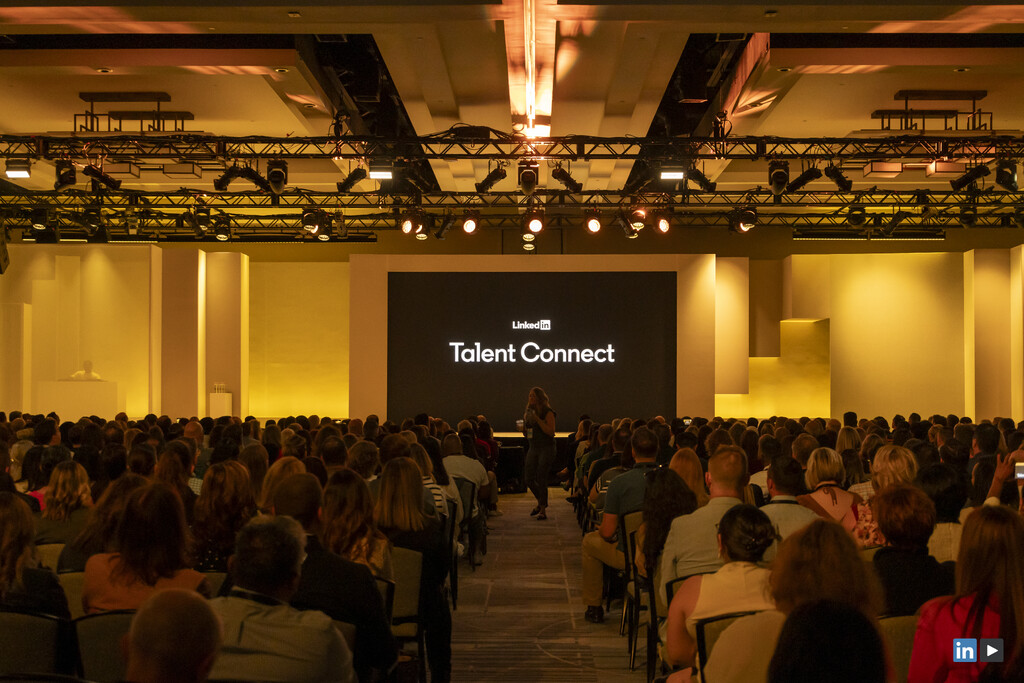With companies undergoing seismic shifts as they adopt generative AI, employees might be looking to chief information or chief technology officers to lead the way. But as generative AI stands to break the mold, those old playbooks may not work anymore.
GAI isn’t just shaking up how we work. It’s changing the very nature of people’s jobs. And when something strikes so deeply at the core of how people work, employees often feel uncertain or anxious. They don’t know what the tool means for them or how it will affect their future.
That’s where the CHRO comes in. CHROs can play a vital role, not just collaborating with the CIO or CTO and helping employees adopt the new technology but directing the critical change management and creating a culture of continuous learning. They can also support workers — and managers particularly — in a way that’s unique to their role: by easing people’s fears.
As Teuila Hanson, LinkedIn’s chief people officer, and Aneesh Raman, LinkedIn’s chief economic opportunity officer, wrote in a recent article, the real challenge right now “is guiding teams through this moment in a way that helps workers feel supported, reassured that their skills and experience still matter, and clear on how those things will continue to matter even more in an AI-powered workplace.”
By empowering your CHRO, companies can go well beyond merely adopting AI to inspiring a culture that allows people to do their best work. Here’s why CHROs may be the missing link in your AI strategy:
1. CHROs can communicate a clear strategy and point of view on AI
Employee anxiety about AI is real. A survey taken late last year by CNBC and SurveyMonkey found that 42% of the workforce is concerned about the impact that GAI will have on their jobs — and, importantly, the more an employee uses AI or GAI at work, the more concerned they are.
CHROs can put them at ease. HR executives have long had to communicate company policy and culture to employees during challenging times. In the last few years alone, they’ve navigated the pandemic, unpredictable economic cycles, and the evolving world of hybrid and remote work.
They can articulate your organization’s transformation plans and where your company is going as well as demonstrate a strong commitment to helping employees adapt. This means working hand in hand with the CIO or CTO to build a unified perspective that’s grounded in not just the “what” of these tools but the “why” behind bringing AI into your workplace in the first place.
The truth is, many of your employees are probably already using AI. Three-quarters of global knowledge workers say they use AI on the job. But a lot of that work might be happening in the shadows. In the absence of any guidance from the top, many employees are even fearful that using AI at work might make them look replaceable.
A clear communication plan can give people the guidance they need.
It can also articulate your company’s ethics and guidelines around GAI. A CHRO can communicate the data security measures your company has in place; any compliance or regulatory rules that affect your business’s use of AI; and the ways in which you can protect your company’s intellectual property.
2. CHROs can build a culture of learning that embraces AI and human skills
Despite the fact that three-quarters of global knowledge workers use AI, only 39% say they’ve gotten any AI training from their company. And only a quarter of learning and development teams LinkedIn surveyed this year said they planned to offer AI training in 2024.
But LinkedIn research has also found that four in five employees want to learn more about how to use AI in their jobs. And CHROs are in the perfect position to make this happen by creating a culture of growth and learning.
CHROs can assess the skills their workforce already has, identify the ones they don’t, and create programs to fill those gaps. For example, does your marketing team know how to write effective prompts? Has the talent acquisition team mastered using AI to write job descriptions? Does the finance organization know how AI can help them analyze data?
If LinkedIn Learning is any proof, employees are eager to acquire these skills. We’ve seen a 5x year-over-year increase in learners taking AI courses.
Because AI is evolving so rapidly, smart CHROs know they need to move forward quickly rather than waiting to create a fully baked AI learning strategy. They can lean into AI-assisted personalized learning paths to help each employee gain relevant skills. And they need to play around with AI themselves — an IMD survey found that CHROs give themselves an average score of 4 out of 10, in terms of their own knowledge of AI.
CHROs can also help workers gain the soft skills they need. As AI takes over routine tasks, uniquely human skills — such as communication, collaboration, and empathy — are becoming increasingly important. LinkedIn has found that 72% of U.S. execs believe that soft skills are more valuable to their organization than AI skills.
Companies that invest in both soft and hard skills will have the edge as AI continues to evolve — and your CHRO is uniquely qualified to help employees learn both.
3. CHROs can help people managers become frontline change agents
To some extent, the GAI evolution isn’t as much about technology as change management. And for a culture to change, people managers need to lead the way.
Managers play a key role as organizations roll out AI-assisted work, with nearly 40% of professionals saying they are already looking for new ways to engage with their managers or leaders about the changes that are happening around them. A software engineer’s experience using AI at work will look quite different from that of a project manager or a customer service associate. Managers can make the change feel personal and manageable for each employee.
Managers are so important that according to Gartner’s annual Top HR Priorities survey, the No. 1 HR priority is leader and manager development. The survey also found that 69% of respondents believe leaders and managers at their organizations aren’t equipped to lead change.
All of which means that managers need support.
The role of the manager itself is changing. Instead of managing the tasks of the team, people leaders are increasingly being called upon to take a more nuanced approach, managing their team’s energy and facilitating collaboration. They need core emotional skills to guide their teams through these big shifts.
Your CHRO can help managers gain the emotional skills they need, equipping them to communicate to employees how the company is investing in them and how they will continue to fit into the organization as technology augments their jobs.
CHROs can also train managers to lean into AI to help with their jobs. GAI, for example, can help managers draft development tips for employees; assist in performance feedback; generate team goals; and improve the performance management process — all of which frees managers to spend more time with their employees and have discussions about what matters most.
Final thoughts
Change management is rarely easy.
It requires an ongoing commitment to helping employees, teams, and managers reach a desired goal. But the most successful companies in the age of AI will come out on top because of their talent, not just their tech.
And if there’s anyone who knows talent, it’s your CHRO.










